Abstract
1. The changes in urinary and renal tissue composition in conscious rats were determined for up to 2 hr following the cessation of intravenous infusion of lysine vasopressin, LVP (at 60 μu./min. 100 g body wt. for 4½ hr). A constant water load (4% body wt.) was maintained during and after lysine vasopressin infusion, by quantitative replacement of excreted water. In these circumstances, any changes in urinary and renal tissue composition are presumed to represent direct consequences of the rapid plasma and tissue clearance of lysine vasopressin.
2. Urinary flow increased and osmolality decreased, rapidly, reaching stable values characteristic of sustained water diuresis after about 60 min.
3. The steepness of the corticomedullary solute concentration gradients also decreased rapidly. Papillary Na and urea concentrations fell to values characteristic of sustained water diuresis in about 45 min.
4. The changes in medullary composition were compounded of a moderate significant increase in water content, a moderate, significant decrease in Na content, and a profound decrease in urea content.
5. In the eventual steady-state water diuresis, urinary outputs of Na and K were significantly lower, and of NH4 significantly higher, than those observed in control experiments where LVP infusion was continued for the corresponding 2 hr.
6. It is concluded that the diuresis following the cessation of LVP infusion is due not merely to reduced nephron permeability to water but also to a rapid reduction in the osmotic force responsible for water reabsorption from the collecting duct.
Full text
PDF
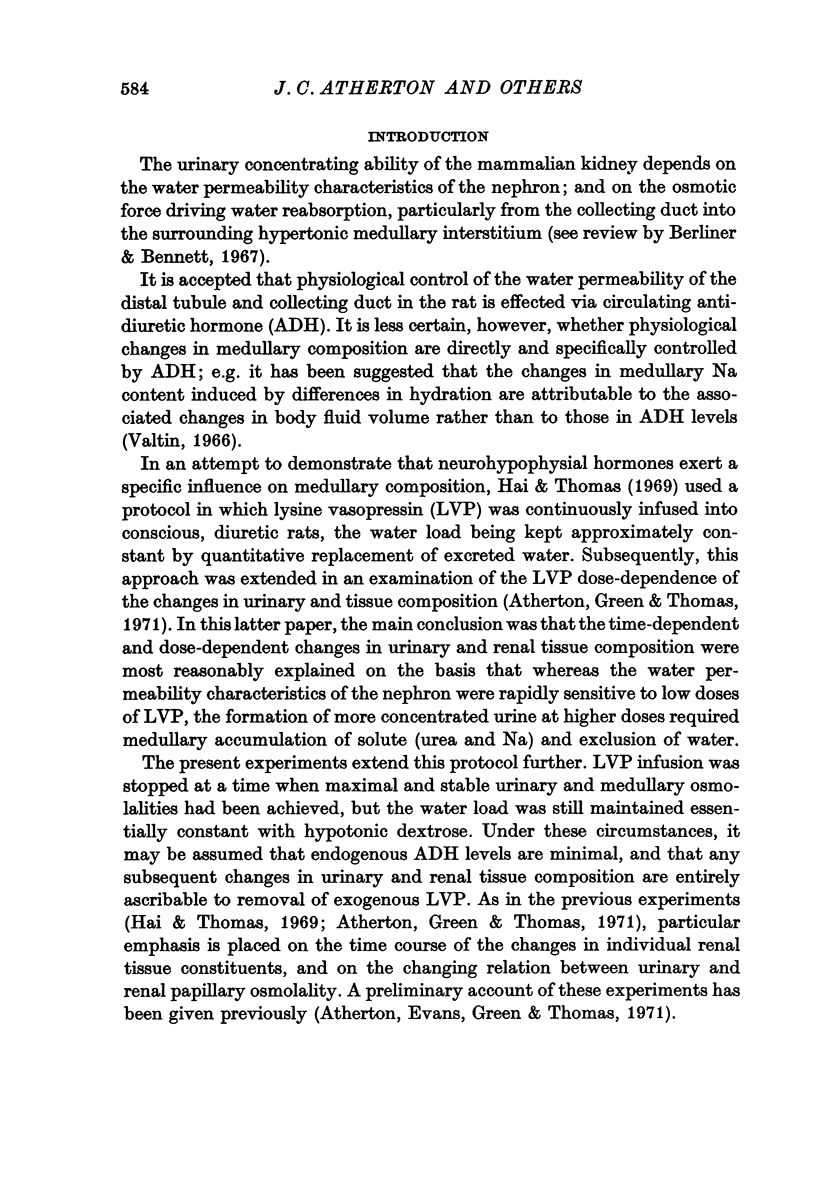
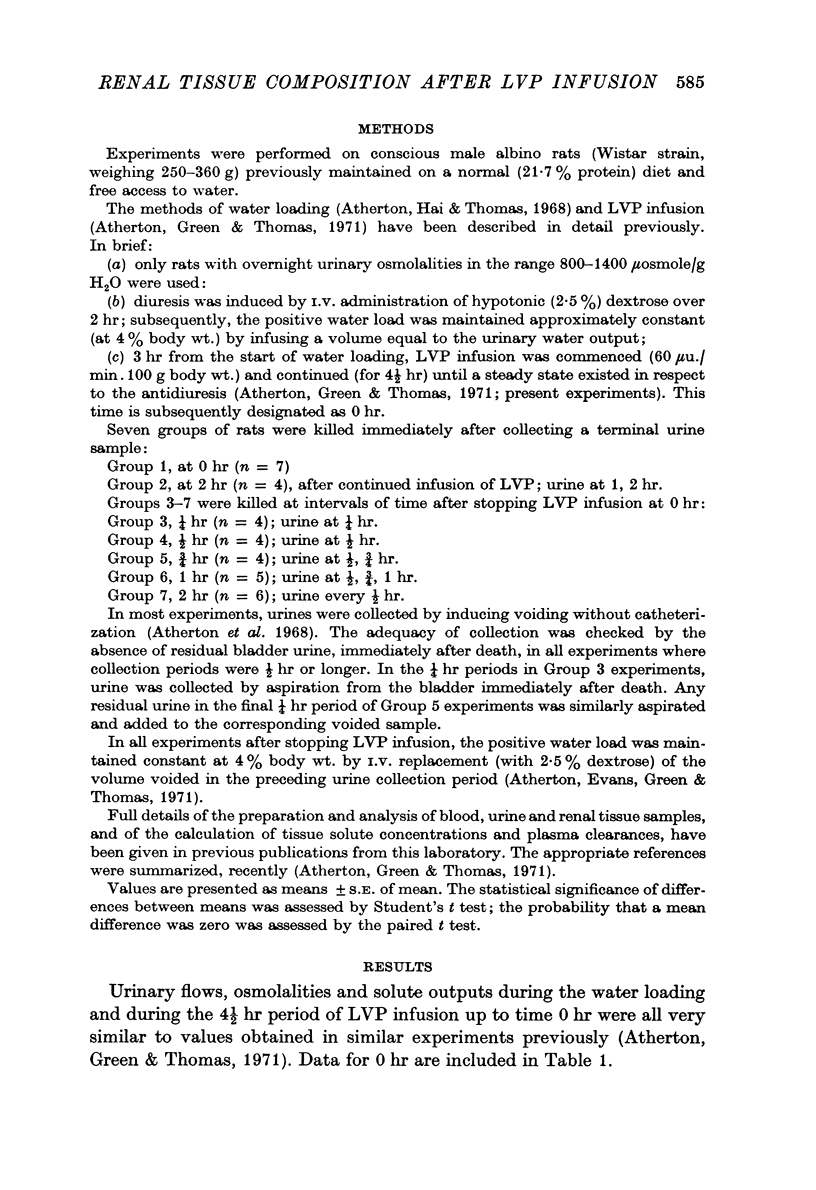

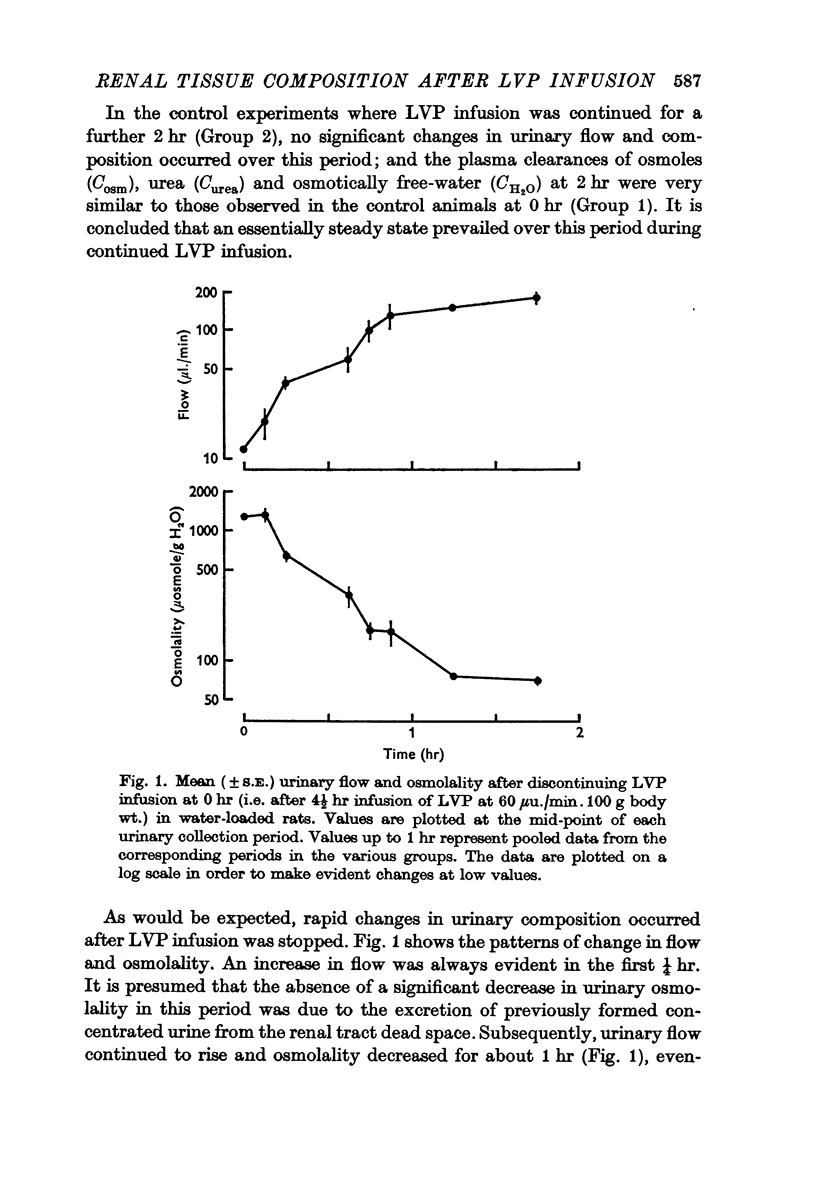



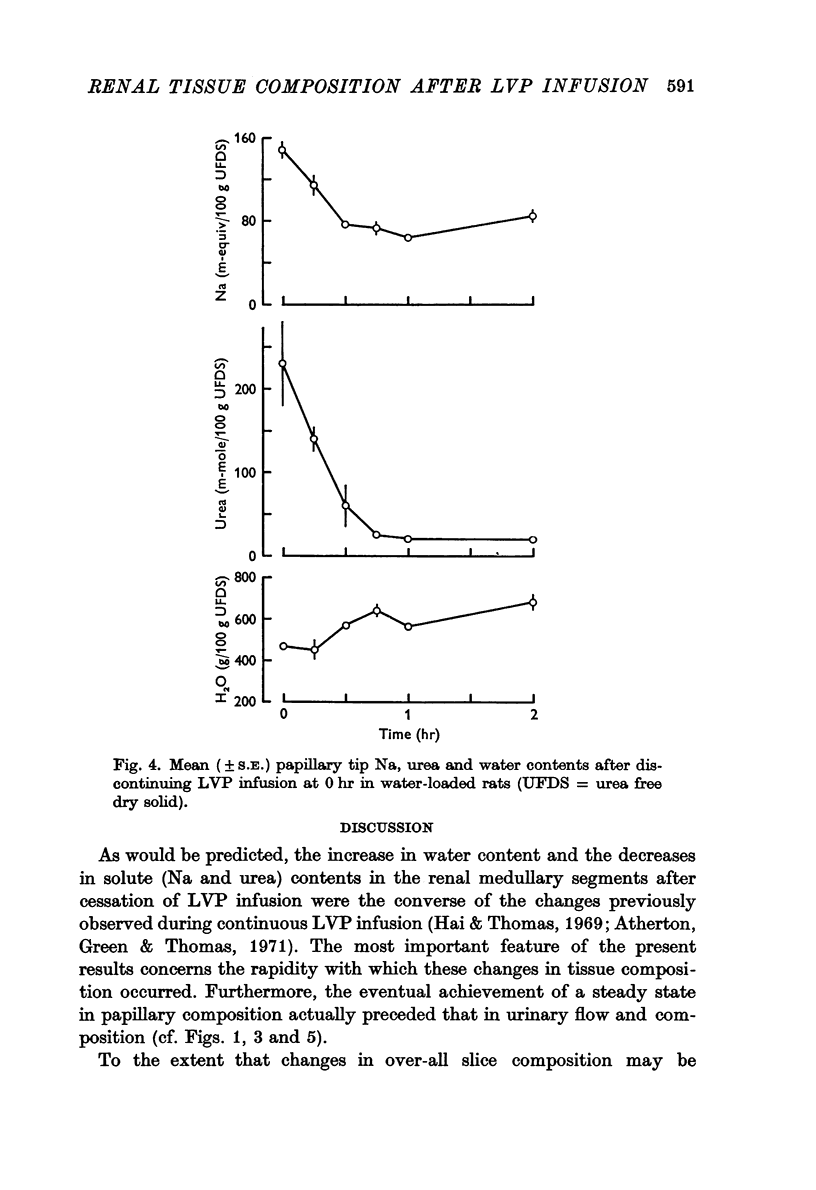
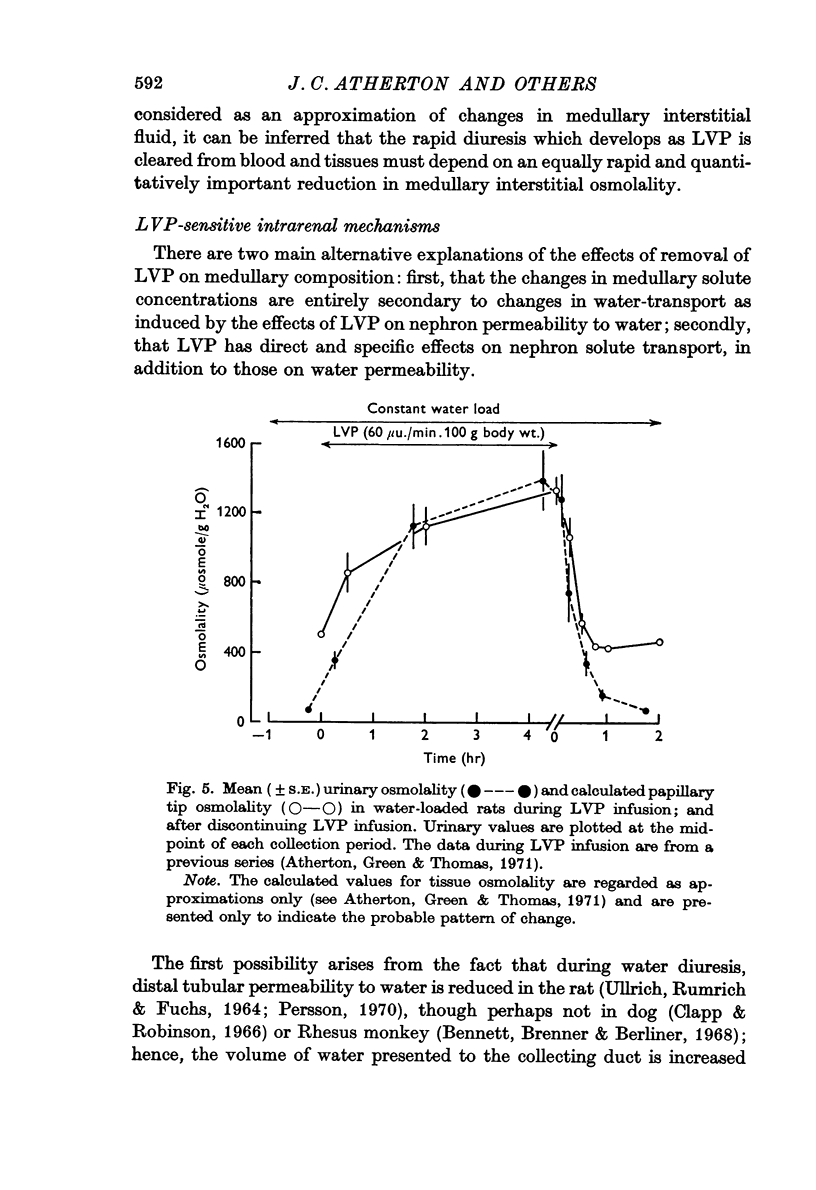
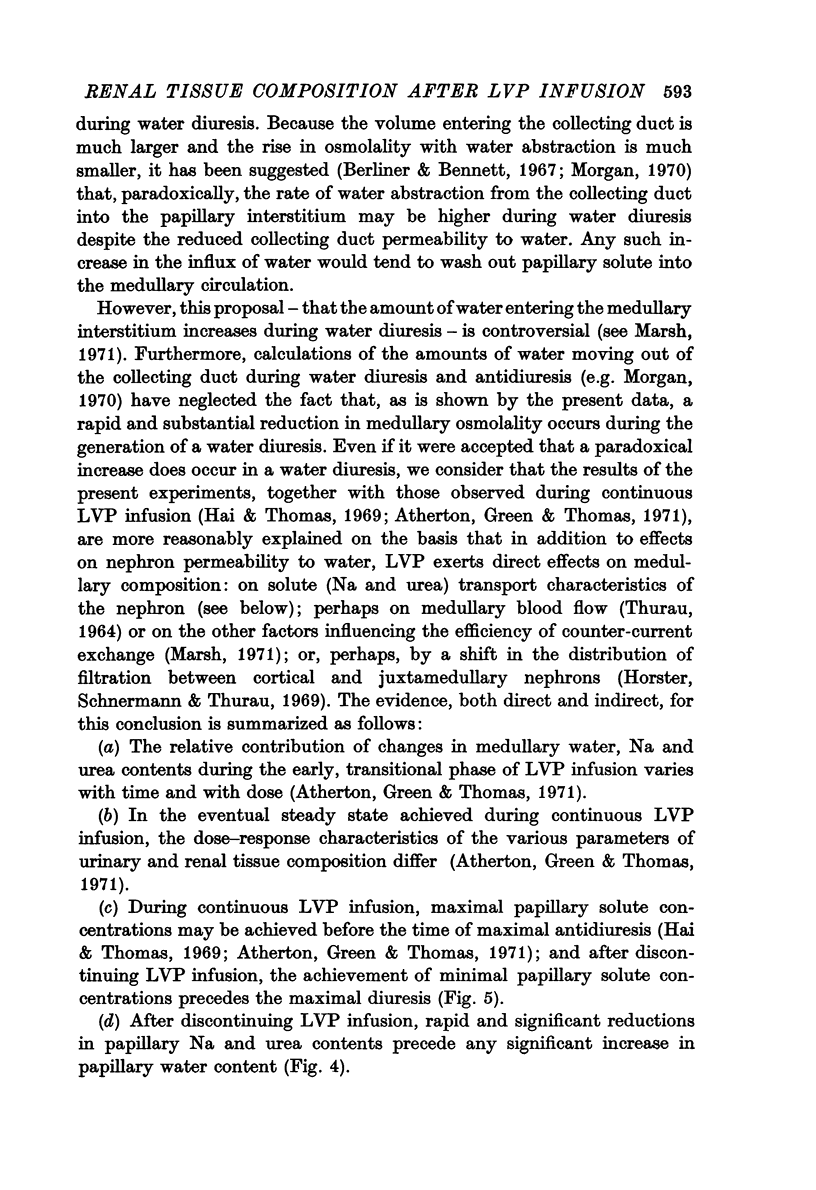
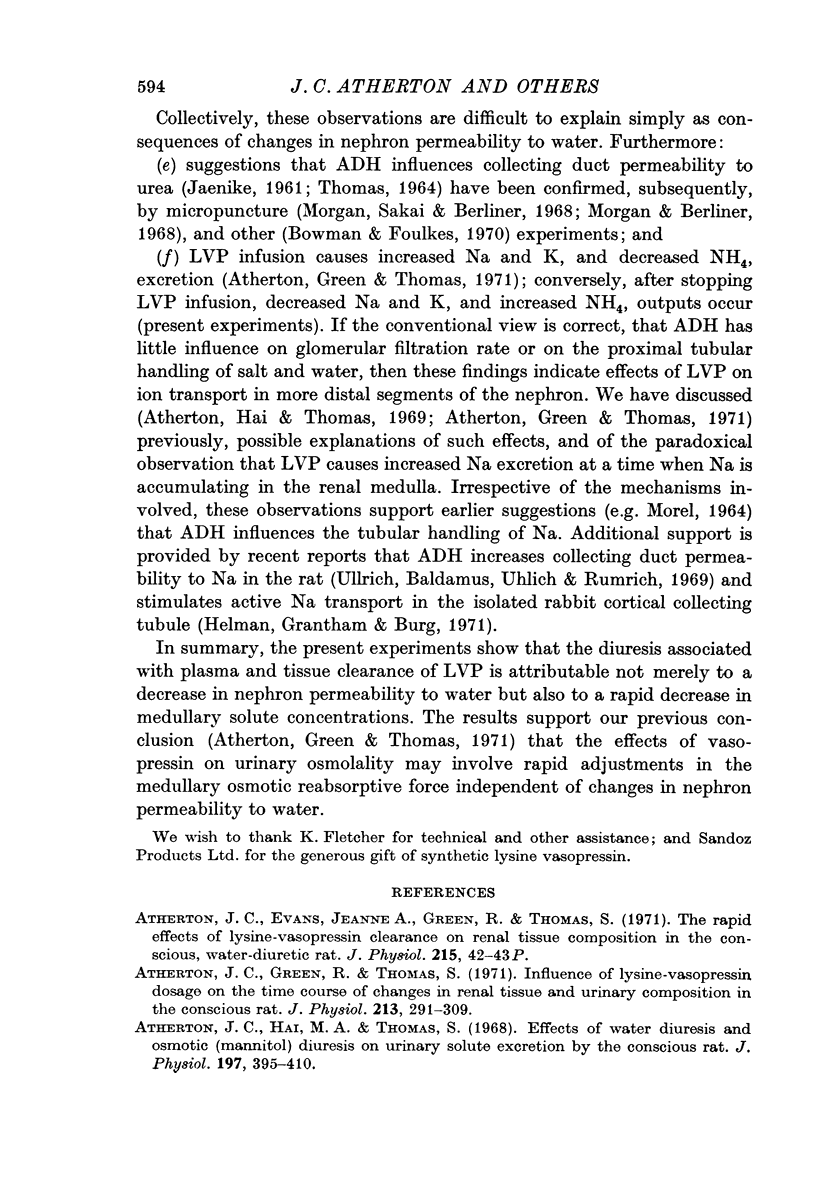
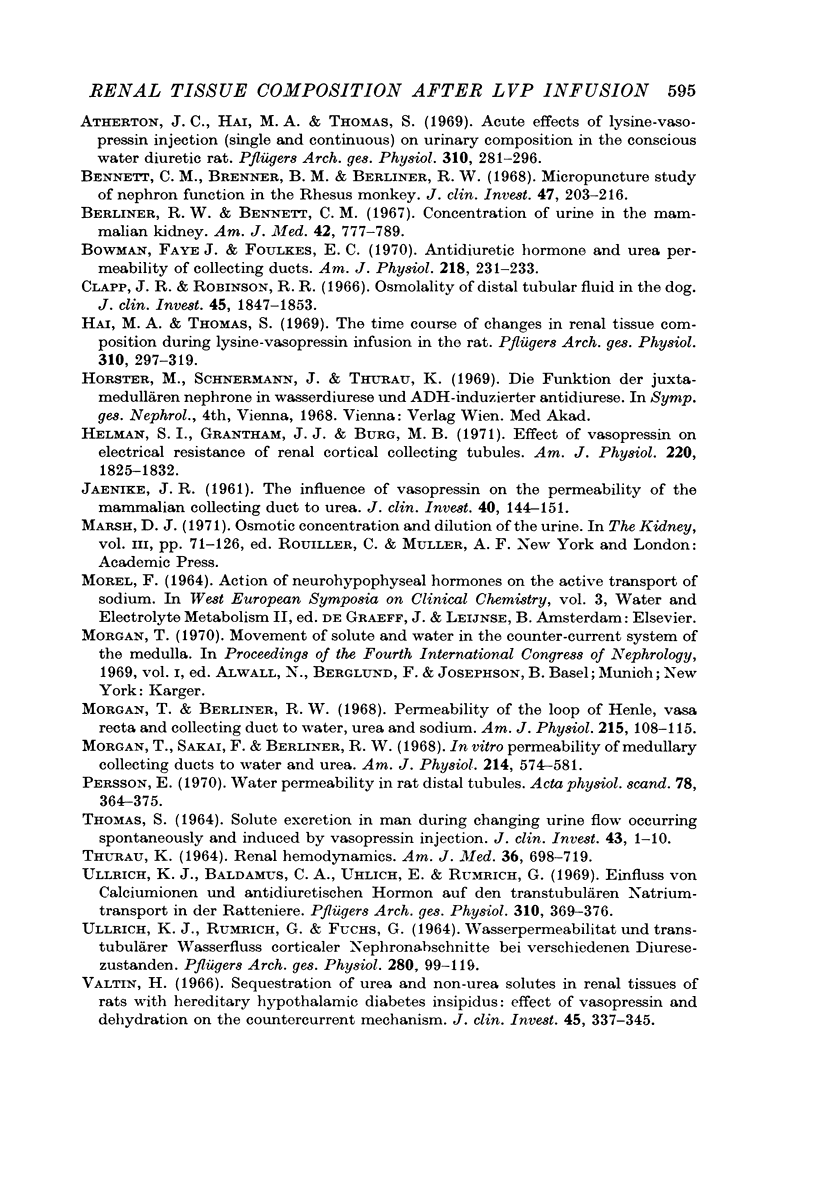
Selected References
These references are in PubMed. This may not be the complete list of references from this article.
- Atherton J. C., Green R., Thomas S. Influence of lysine-vasopressin dosage on the time course of changes in renal tissue and urinary composition in the conscious rat. J Physiol. 1971 Mar;213(2):291–309. doi: 10.1113/jphysiol.1971.sp009383. [DOI] [PMC free article] [PubMed] [Google Scholar]
- Atherton J. C., Hai M. A., Thomas S. Acute effects of lysine vasopressin injection (single and continuous) on urinary composition in the conscious water diuretic rat. Pflugers Arch. 1969;310(4):281–296. doi: 10.1007/BF00587240. [DOI] [PubMed] [Google Scholar]
- Atherton J. C., Hai M. A., Thomas S. Effects of water diuresis and osmotic (mannitol) diuresis on urinary solute excretion by the conscious rat. J Physiol. 1968 Jul;197(2):395–410. doi: 10.1113/jphysiol.1968.sp008566. [DOI] [PMC free article] [PubMed] [Google Scholar]
- Bennett C. M., Brenner B. M., Berliner R. W. Micropuncture study of nephron function in the rhesus monkey. J Clin Invest. 1968 Jan;47(1):203–216. doi: 10.1172/JCI105710. [DOI] [PMC free article] [PubMed] [Google Scholar]
- Berliner R. W., Bennett C. M. Concentration of urine in the mammalian kidney. Am J Med. 1967 May;42(5):777–789. doi: 10.1016/0002-9343(67)90095-2. [DOI] [PubMed] [Google Scholar]
- Bowman F. J., Foulkes E. C. Antidiuretic hormone and urea permeability of collecting ducts. Am J Physiol. 1970 Jan;218(1):231–233. doi: 10.1152/ajplegacy.1970.218.1.231. [DOI] [PubMed] [Google Scholar]
- Clapp J. R., Robinson R. R. Osmolality of distal tubular fluid in the dog. J Clin Invest. 1966 Dec;45(12):1847–1853. doi: 10.1172/JCI105488. [DOI] [PMC free article] [PubMed] [Google Scholar]
- Hai M. A., Thomas S. The time-course of changes in renal tissue composition during lysine vasopressin infusion in the rat. Pflugers Arch. 1969;310(4):297–317. doi: 10.1007/BF00587241. [DOI] [PubMed] [Google Scholar]
- Helman S. I., Grantham J. J., Burg M. B. Effect of vasopressin on electrical resistance of renal cortical collecting tubules. Am J Physiol. 1971 Jun;220(6):1825–1832. doi: 10.1152/ajplegacy.1971.220.6.1825. [DOI] [PubMed] [Google Scholar]
- JAENIKE J. R. The influence of vasopressin on the permeability of the mammalian collecting duct to urea. J Clin Invest. 1961 Jan;40:144–151. doi: 10.1172/JCI104228. [DOI] [PMC free article] [PubMed] [Google Scholar]
- Morgan T., Berliner R. W. Permeability of the loop of Henle, vasa recta, and collecting duct to water, urea, and sodium. Am J Physiol. 1968 Jul;215(1):108–115. doi: 10.1152/ajplegacy.1968.215.1.108. [DOI] [PubMed] [Google Scholar]
- Morgan T., Sakai F., Berliner R. W. In vitro permeability of medullary collecting ducts to water and urea. Am J Physiol. 1968 Mar;214(3):574–581. doi: 10.1152/ajplegacy.1968.214.3.574. [DOI] [PubMed] [Google Scholar]
- Persson E. Water permeability in rat distal tubules. Acta Physiol Scand. 1970 Mar;78(3):364–375. doi: 10.1111/j.1748-1716.1970.tb04672.x. [DOI] [PubMed] [Google Scholar]
- THOMAS S. SOLUTE EXCRETION IN MAN DURING CHANGING URINE FLOW OCCURRING SPONTANEOUSLY AND INDUCED BY VASOPRESSIN INJECTION. J Clin Invest. 1964 Jan;43:1–10. doi: 10.1172/JCI104883. [DOI] [PMC free article] [PubMed] [Google Scholar]
- THURAU K. RENAL HEMODYNAMICS. Am J Med. 1964 May;36:698–719. doi: 10.1016/0002-9343(64)90181-0. [DOI] [PubMed] [Google Scholar]
- ULLRICH K. J., RUMRICH G., FUCHS G. WASSERPERMEABILITAET UND TRANDTUBULAERER WASSERFLUSS CORTICALER NEPHRONABSCHNITTE BEI VERSCHIEDENEN DIURESEZUSTAENDEN. Pflugers Arch Gesamte Physiol Menschen Tiere. 1964 Jul 1;280:99–119. [PubMed] [Google Scholar]
- Ullrich K. J., Baldamus C. A., Uhlich E., Rumrich G. Einfluss von Calciumionen und antidiuretischem Hormon auf den transtubulären Natriumtransport in der Rattenniere. Pflugers Arch. 1969;310(4):369–376. doi: 10.1007/BF00587245. [DOI] [PubMed] [Google Scholar]
- Valtin H. Sequestration of urea and nonurea solutes in renal tissues of rats with hereditary hypothalamic diabetes insipidus: effect of vasopressin and dehydration on the countercurrent mechanism. J Clin Invest. 1966 Mar;45(3):337–345. doi: 10.1172/JCI105348. [DOI] [PMC free article] [PubMed] [Google Scholar]


